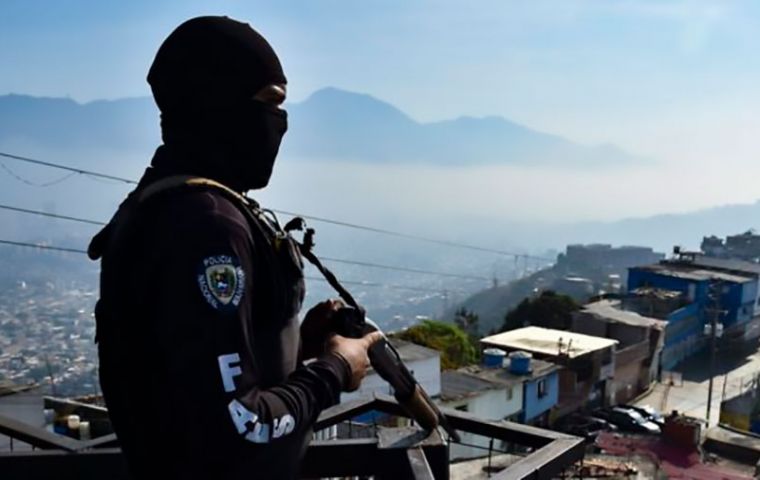MercoPress. South Atlantic News Agency
Colombia and Venezuela ranked as “least peaceful” countries in Latin America; Uruguay sets standard
 Colombia and Venezuela are ranked as the least peaceful countries in Latin America, while Uruguay is the least violent in the region.
Colombia and Venezuela are ranked as the least peaceful countries in Latin America, while Uruguay is the least violent in the region. According to a study published on Wednesday by the Institute for Economics and Peace, Colombia and Venezuela have been considered the “least peaceful” countries in Latin America due to socio-political conflicts and internal violence.
The Global Peace Index, compiled by the Institute for Economics and Peace, ranks Colombia, tied with Venezuela, at 140th place, the worst among Latin American countries, while Uruguay is the most peaceful country in the region, ranking 50th.
In its seventeenth report, the Institute, headquartered in Sydney with offices in cities such as London, New York, Harare, and Mexico City, assessed peace levels in 163 countries and territories, representing 99.7% of the world's population.
Following Colombia and Venezuela, the lowest-ranking Latin American countries on the index are Brazil (132), Haiti (129), Nicaragua (123), El Salvador (122), Honduras (120), Peru (103), Cuba (99), Ecuador (97), Dominican Republic (93), and Bolivia (78), while Paraguay and Panama share the 68th position.
Europe, with Iceland and Denmark leading the way, remains the most peaceful region in the world, while Costa Rica (39) - seven places below Spain - Uruguay (50), Argentina (54), and Chile (58) rank higher among the Latin American countries.
Colombia's cost of violence
The study highlights that Colombia is one of the countries most affected by the economic impact of violence due to “the number of refugees and internally displaced persons.”
With a cost of 28.6% of its GDP in 2022, Colombia is among the eight countries - led by Ukraine, Afghanistan, Sudan, North Korea, Somalia, and the Central African Republic - where the economic impact of violence represents more than one-fifth of their economies.
The report also emphasizes that Colombia experienced a deterioration in its political stability following “social unrest” and political polarization leading up to the May 2022 presidential elections.
“The tensions related to deep divisions within Colombian society, even after the election of current President Gustavo Petro,” states the document.
Colombia, a country that hosts over 1.7 million displaced people and Venezuelan immigrants, continues to face violence from armed dissident groups and drug trafficking cartels, which particularly affect historically marginalized communities, such as Afro-Colombians, indigenous people, and farmers.
Mexico
The study also points out that Mexico, located in the Central American region, has seen a slight improvement in its indicators, mainly in the militarization aspect.
However, Mexico, where over 80 homicides occur daily, experienced declines in three indicators: incarceration rates, violent demonstrations, and external conflicts fought.
“México still has a number of deaths from internal conflicts, with the ongoing conflict between the government and criminal organizations representing a serious threat to internal peace,” states the document.
In contrast, the report highlights some improvements in several countries in Central America and the Caribbean due to reductions in the number of homicides, although the region still has the highest average homicide rate in the world.
The report warns that El Salvador, along with Israel, Malawi, and Burkina Faso, experienced the highest political instability last year, although the homicide rate dropped from 103 per 100,000 in 2015 to 7.8 per 100,000 in 2022.
El Salvador has been under a state of exception since March of last year, and more than 70,000 people have been arrested to date, with the government of Nayib Bukele claiming that they all belong to gangs, although human rights organizations believe that over 5,000 are “direct victims” of human rights violations.




Top Comments
Disclaimer & comment rulesCommenting for this story is now closed.
If you have a Facebook account, become a fan and comment on our Facebook Page!